The “digital age” is termed this way for our overwhelming reliance on software to get tasks done. These jobs are ubiquitous too, and all are deeply entrenched in every professional and casual setting. From ensuring the reliable working of heavy machinery and state apparatus to me writing this piece on Google Docs on my laptop, the software has become all-encompassing, and by extension, software development.
But what average non-programming folks don’t seem to realize is the vast amounts of work and maintenance required by professionals to ensure our software continues to run without fail. They don’t understand how new software is built from the ground up either and the many different and diverse types.
But that changes today. In this article, I aim to educate everyone on software development and help familiarize the average reader with its uses and variety. After all, the software development domain amounts to $500 billion; it’s only fair that everyone understood the true extent of this giant's underbelly.
By the end of this article, you will be well-versed in the aspects concerning software development; its types, the methodologies used, and the languages required for each specific development style.
What Is Software Development?
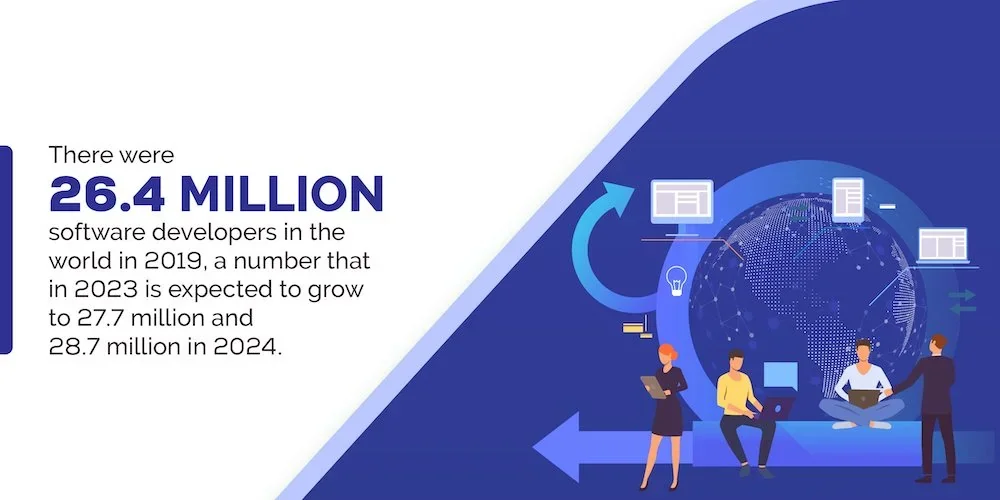
Software development, also known as application development and software design, involves the following processes:
- Preliminary research
- Flow design
- App designing
- Programming
- Software testing
- Debugging
This process comprises various stages of the software development life cycle (SDLC). Today’s software development includes a broad range of software.
These include, but are not limited to:
a. Programming Software
Programming software is the tool developed for software developers to write code for other software. This software constitutes compilers, text editors, linkers, debuggers, and interpreters.
b. System Software
System software is the foundation of application software. This segment includes device drivers, operating systems (OS), text editors, utilities, and compilers, which enable the computer to run more efficiently. System software can also manage hardware components.
c. Application Software
Application software is designed to perform specific tasks. Examples of application software include enterprise software (CRM, HRM), SaaS apps, games, database software, etc. Most people are familiar with “software” through application software.
D. Freeware, Open-Source, Commercial Software
- Open-source software is free and is distributed without paying any fees. The developer also provides the source code used to make the program so anyone can modify or improve it.
- Freeware is typically distributed to end-users at zero cost. It is also usually proprietary software, with the only difference between it and open-source software being that the source code of free software is not provided.
- Commercial software is designed or developed for licensing or selling to end-users or commercial entities.
11 Types of Software Development
Software engineering and development come in many shapes and sizes. While the term itself can be used interchangeably to describe all forms of computer programming, there are specific niches to familiarize yourself with.
1. Software Application Development
Software application development is the method of developing computer programs that operate on traditional desktop operating systems such as Microsoft Windows, Mac, or Linux.
Programming Languages Used:
- C/C++
- Java
- C#
- VB.NET
- Python
2. Client-Side Web Development (Front-End)
In software development, users are clients. Everything they see in software is called the client side. It includes all content, such as text, images, and other UI, and the interactions or operations performed by the software within the user interface.
Programming Languages Used:
- HTML / CSS
- CSS and JavaScript Frameworks (like ReactJS, AngularJS, EmberJS, etc)
- CSS Preprocessing
- Version Control
- Responsive Design
- Testing/Debugging tools
- Bootstrap
3. Server-Side Web Development (Back-End)
The server-side refers to everything that happens in the back-end and away and is hidden from the user. All the software’s logic runs on the server. It includes dynamic web page rendering, database interactions, certification identifications, etc., and this task is usually undertaken by specific software development companies for businesses.
Programming Languages Used:
- Ruby
- Java
- PHP
- C#
- .NET
- NodeJS
- Go
4. Mobile Development
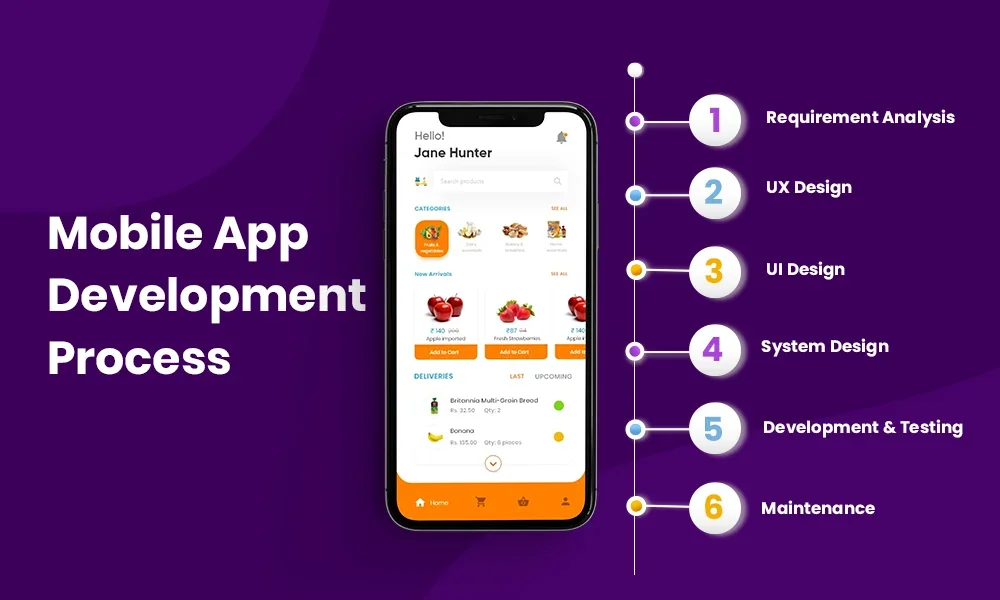
Mobile development or as now often referred to as “app development” is the creation of mobile applications that run on mobile devices such as iOS or Android mobile operating systems. These mobile apps are OS-specific while most are intentionally designed to work cross-platform by most mobile app development companies.
Programming Languages Used:
- Swift
- Objective C
- HTML5
- C#
- Java
5. API Development
API (application programming interface) development is the developmental approach when developers make certain programs that work as linkers across different software elements on various devices such as desktops, mobile devices, and the Web.
API development is the basis of standard processes, development tools, types, database access rules, and GUI interaction methods, and programmers who build other applications can employ it for this specific API.
6. Embedded Software Development
Embedded software is an integral part of software development too. The Internet of Things (IoT) gave rise to technologies and ecosystems, which created a boom in the embedded software development segment. This development deals with coding skills required for embedded systems like Raspberry Pi, Arduino, and Beaglebones.
Programming Languages Used:
- Embedded C
- Assembler
- Python
- Arduino (an embedded C derivative)
- Java
7. Database Development
Almost all software programs need a database and organized data collection. A database management system (DBMS) is software used by businesses to help interact with end-users, apps, and the database itself to collect, curate, and analyze data. Software developers use DBMS to tune and set up new and legacy applications.
Programming Languages Used:
- MySQL
- PostgreSQL
- MongoDB
- Redis
- Memcached
- MSSQL
8. Cloud Computing
In place of personal computers, physical storage devices, or local servers, cloud services are deployed to use a remote server network to store and manage data. Developers involved in cloud computing software development develop software applications that support cloud storage apps, such as GitHub, Amazon Web Services (AWS), and OneDrive storage.
Programming Languages Used:
- Java
- XML
- R
- Erlang
- Google’s Go!
9. Security Software Development
Penetration testers and cybersecurity experts work for the benefit of many companies and institutions and their systems and data. The teams develop software to protect important company assets from viruses, cyberattacks, and theft for their unique use cases. These testers try to hack the system to locate any existing vulnerabilities or weaknesses.
Programming Languages Used:
- C/C++
- Java
- C#
10. Data Science Development
Data scientists attempt to find value in large data sets, which would otherwise have no value to users. These scientists use analytical methods to obtain actionable and valuable insights by using analytical methods to mine and manipulate data loads. With the help of artificial intelligence (AI), data scientists train their systems and software to learn various data models so data science can ensure that the data is presented in the correct form for use in AI applications.
Programming Languages Used:
- C/C++
- MATLAB
- Python
11. Low-Code And No-Code Development
Low-code and no-code solutions are new concepts that have flooded the software development sphere intending to simplify the work of software developers. The low-code model allows developers of all tiers of experience to build applications using a visual user interface blended with model-driven logic which lessens the amount of traditional manual coding, thereby accelerating the app’s delivery.
No-code platforms are developed to be user-friendly and do not need any necessary development knowledge which allows anyone in the company to take advantage of the platform to create applications that they can easily use.
Software Development Methodologies
The Software Development Lifecycle or SDLC is a set of international rules and guidelines used by developers to build and improve their software applications. It allows the software product development teams to follow a standardized process to design, create and maintain high-quality software.
The key aim of the software development process is to maximize efficiency by focusing on problem-solving and helping teams retain all budget and timeline goals.
Software development companies like us at Aloa are in constant efforts to reduce costs, increase delivery times, and meet and exceed customer expectations and needs, and the SDLC helps them to achieve all goals by minimizing inefficiencies and ensuring the project runs smoothly. It enables fine-grained analysis of each step of the process.
Why SDLC?
- Forms the basis and framework for project planning and estimation
- It allows accurate project tracking and control
- It helps improve the progress visibility of the project plan to all stakeholders
- It improves development speed and reduces inefficiencies
- It helps companies reduce project risk and project management plan overhead
The Phases of Software Development Methodologies
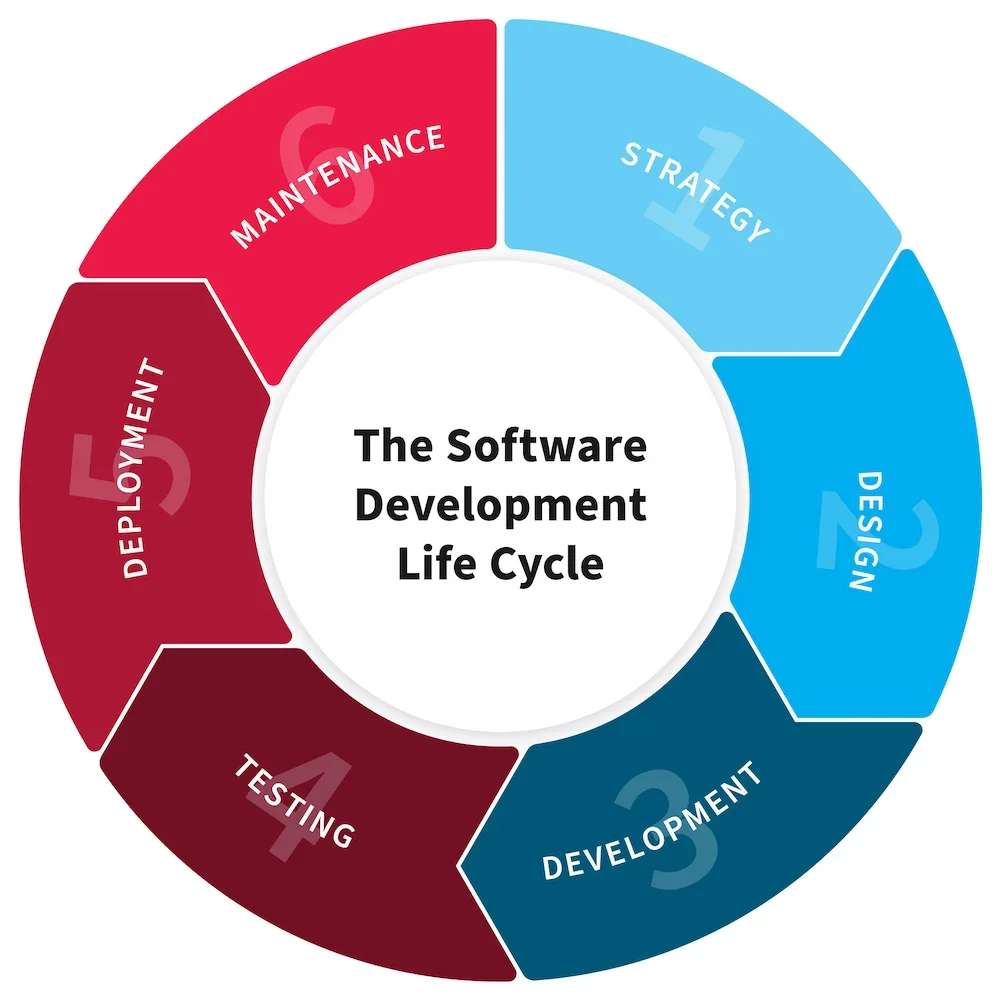
The SDLC comprises a detailed plan that tables out the exact specifications on how to plan, build, and maintain specific software. The SDLC is broken down into 6 to 8 phases, and each phase has its unique process and deliverables.
These include:
I. Requirement Gathering
Requirement gathering is the foundation for every phase in the cycle. During it, all stakeholders involved in the project gather the relevant information about the software. The stakeholders are customers, product owners, or any other key members of the software’s initiation and development.
Typically, a meeting is scheduled between the project manager and all relevant stakeholders, and while this process can be very time-consuming it is necessary. It helps the project manager to have a clear understanding of all the deliverables and expectations surrounding the software and includes everything from the software’s expected performance to its completion date.
After completing this phase, a feasibility study is carried out to establish a practical timeline for the project's completion. All data and information are then documented in the Software Requirement Specification (SRS) document.
II. Design
This phase can be seen as the blueprint of the software and looks to model all the ways the software application will eventually work. Once the requirement gathering phase is complete and the SRS document is prepared, a review is initiated to help guide the relevant development teams during this process.
This design and development team includes the developers who carry out the high-level design of the software about the architecture and technology the software will incorporate. It builds the foundation for other designs like the user interface, user flow, communication design, and others.
III. Software Development
During the software development phase, engineers and developers of varying expertise (frontend and backend) begin the process of developing the software by implementing the design required. This phase can be completed, depending on the size of the project, by a single developer or a large team.
The backend and frontend developers either work in tandem or one after the other. Typically, the backend developer creates the data structure while the frontend developer creates the user interface according to the design and incorporates it into the backend, once the prototyping is complete.
Good code quality is essential during this process, and documentation is carried out by building user guides or by leaving comments in the source code.
IV. Testing
Testing isn’t subjective to a specific group of people and can be carried out by the stakeholders, the developers, or by a dedicated team of software testers. Previously, testing was usually initiated at the end of the development phase, but most SDLCs incorporate them with development to ensure most bugs and defects are ironed out. Testers have the option to automate the process too.
The specific software testing includes the following:
- System Testing: It concerns testing the software as a whole to validate that it meets all the specified requirements.
- Integration Testing: It incorporates individual modules to enable testing as a group. Testing teams interact with the software by clicking on buttons and carrying out basic UI actions. During this phase, an understanding of how the backend works is not necessary.
- User Acceptance Testing: This is the final series of tests done before the software is launched. Potential users or clients perform it as part of quality assurance. The objective of this testing is to ensure the software can handle real-life scenarios.
V. Deployment
Once testing has been completed, the software is launched to prospective customers. This phase of the SDLC can be complex as it involves the generation of user guides regarding installation and system requirements.
VI. Maintenance
Maintenance is the final stage of the SDLC but one that is continuous and spans the longest. During this phase, any bugs that weren’t highlighted during the development or testing phases are fixed. But as the software is already deployed, these fixes are released as software updates which are required in the validation of the proper working of the software.
User feedback is also collected in this stage, which can help the developers and stakeholders to identify the shortcomings in the product and any changes or feature additions needed to be made in the future.
5 Popular Types of Software Development Methodologies
A. Agile Model
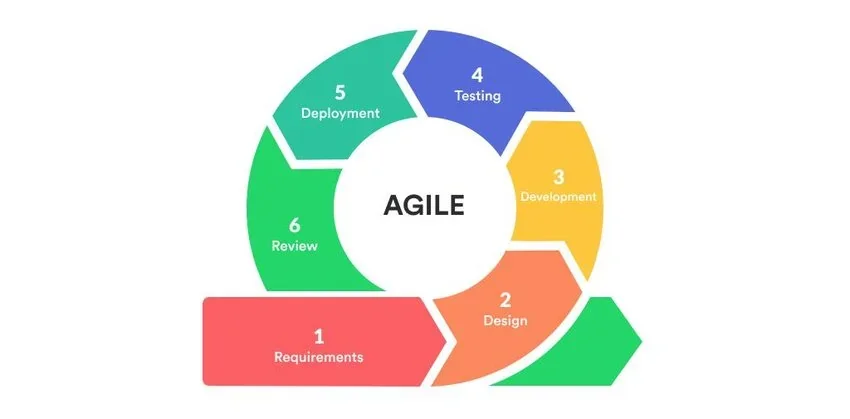
The Agile methodology is perhaps the most popularly deployed software development methodology today. Agile breaks down the entire developmental workflow into smaller chunks or sprints, which have completion dates from one to three weeks. All members of the development then ensure the complete follow-through of the sprints to ensure all deliverables are on schedule**.**
It is also the most popular development methodology that promotes better product management by continuous interaction between testing and development in the SDLC process of any project. The most popular interactive Agile development methodologies are Scrum and Kanban. Agile helps developers and testers to collaborate better, remove inefficiencies, and reduce overall project costs by eliminating any stalls and delays.
B. Waterfall Model
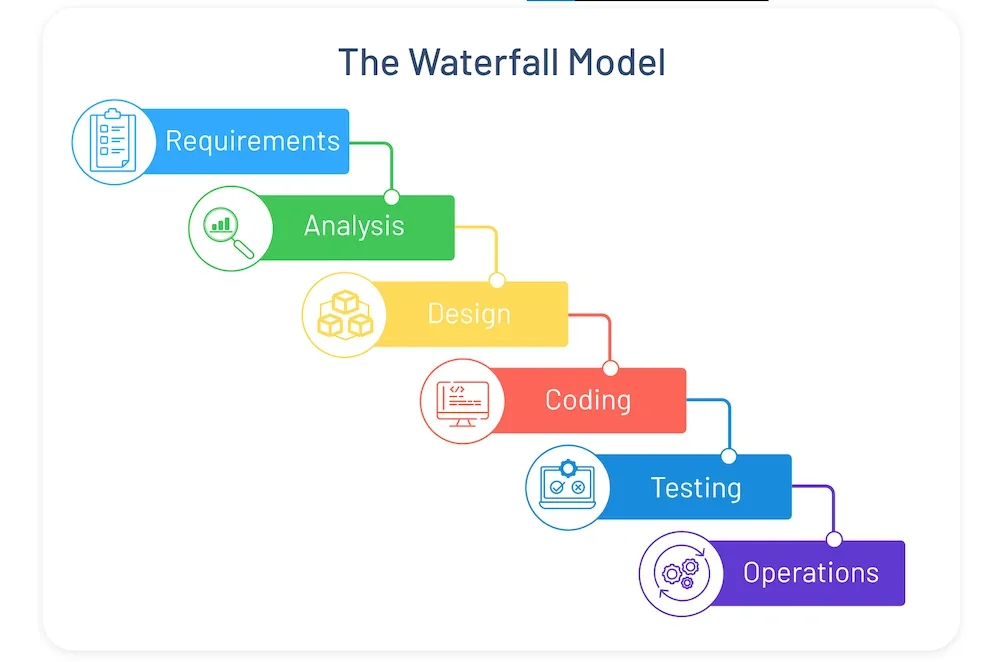
The waterfall model is document-intensive but is another widely accepted SDLC model. In this method, software development and its corresponding processes are broken down into various stages of SDLC. Once one stage of the SDLC is complete, the next can begin.
While efficient in its own right, the waterfall model requires elaborate recording of the early stages and the operations needed in the subsequent stages.
C. Incremental Model
The incremental model acts as a series of waterfall cycles and isn’t just limited to one particular model.
When the development project commences, the requirements are divided into iterative groups, and each group follows the SDLC model to develop software. This process is repeated, with each version continually adding more features until all requirements are met. In the increments model, each cycle behaves as a maintenance phase for the previous software version.
Any changes to this model can effectively allow for overlapping development cycles. A new cycle can also begin before the completion of the previous cycle.
D. V Model in SDLC
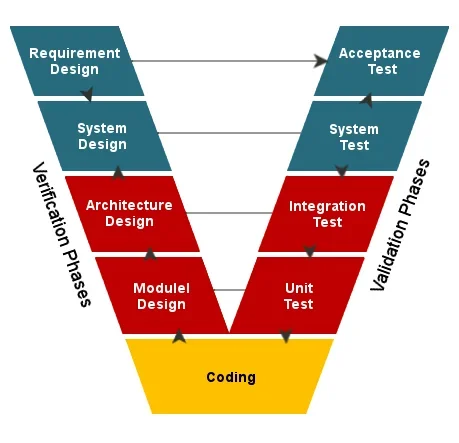
Parallel planning is incorporated in the V-Model of the SDLC. On one side there is a verification stage and the validation stage on the other. This model is commonly used through the coding stage.
E. Spiral Model
The spiral model is a risk-driven process model. This specific SDLC model can aid the software development team to adopt one or more process model elements, such as waterfall, increment, or waterfall, and then incorporates the best features of the prototype model and waterfall model. The Spiral methodology is an assortment of concurrent design, rapid prototyping, and development activities.
Conclusion
The software development world is an incredibly complex and diverse part of information technology (IT). The entire foundation of modern computing and digitalization revolves around the real-world applications of software and applications. Understanding the foundations and the tools and methodologies used in software development is an important first step for all aspiring developers or ones looking to hire skilled development staff on their teams.
One important thing to note is to select a company that will give you peace of mind about the project’s welfare knowing proven experts are working on it. It can only be provided by companies that have a rigorous vetting process in place to narrow down the developers to only those that are cutting-edge and fully experienced with custom software development. We can provide you with that assurance in Aloa. If you have any questions, please contact us at [email protected] so we can build your next project.

